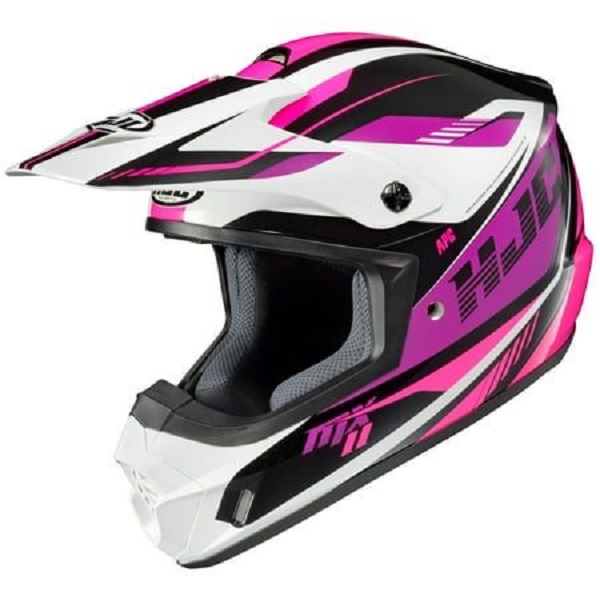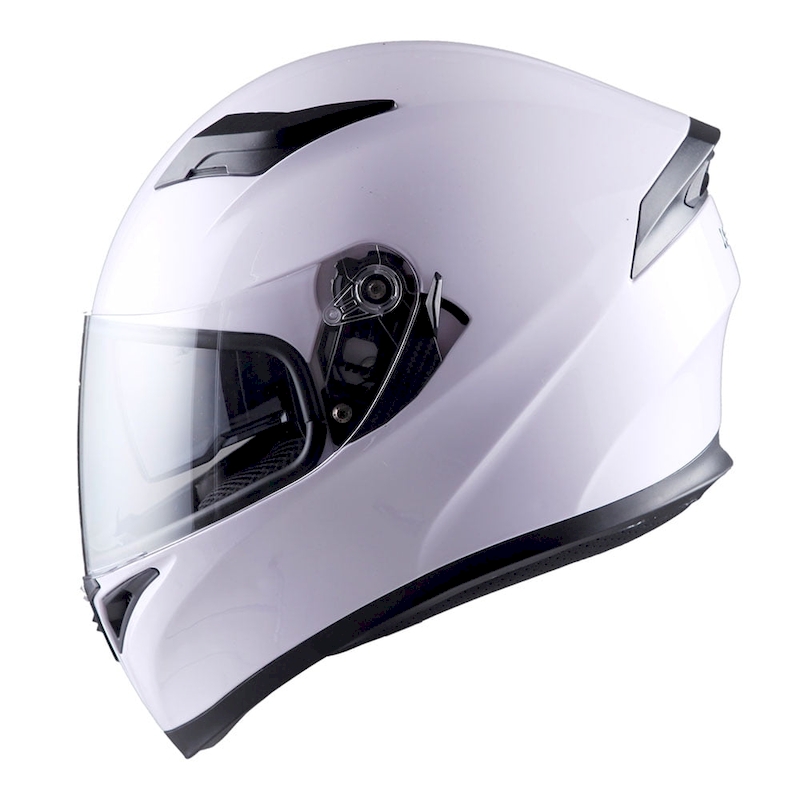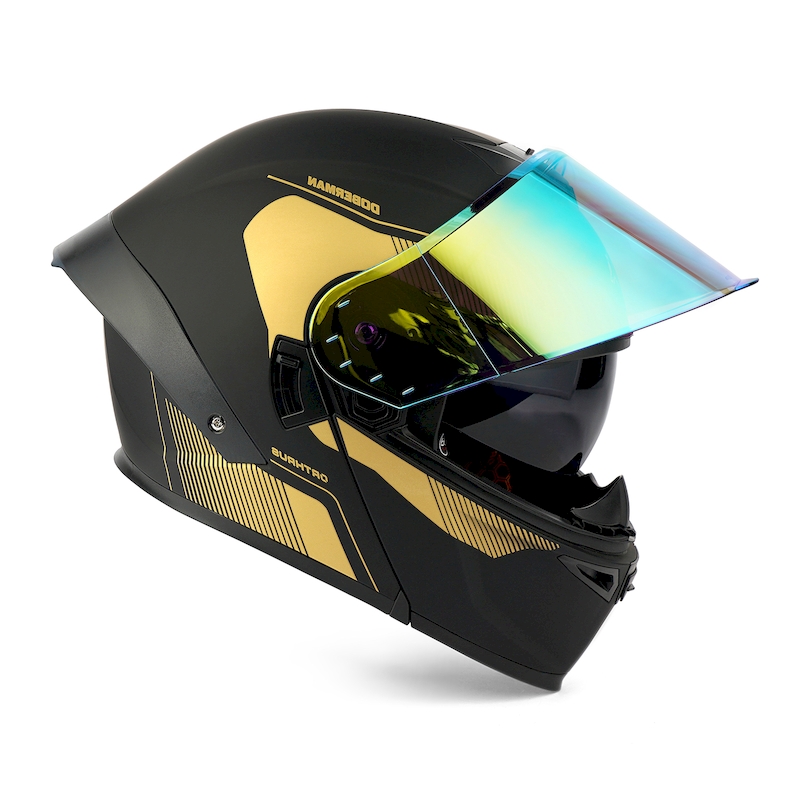When it comes to motorcycle safety, the importance of wearing a helmet cannot be overstated. Among the various helmet designs available, full-face helmets stand out as the optimal choice for riders seeking the highest level of protection. A full-face helmet encompasses the entire head, featuring a robust shell that shields both the skull and face from potential injuries during accidents or falls. The full-face configuration not only enhances safety but also offers the added advantage of wind protection and a generally quieter ride. With numerous styles, features, and designs on the market, choosing the right full-face helmet can seem overwhelming. In this comprehensive guide, we will delve into the various aspects of full-face helmets, including their benefits, construction, fitting, maintenance tips, and the best models available. By the end of this article, riders will gain a greater understanding of what constitutes the perfect full-face helmet for their specific needs and preferences.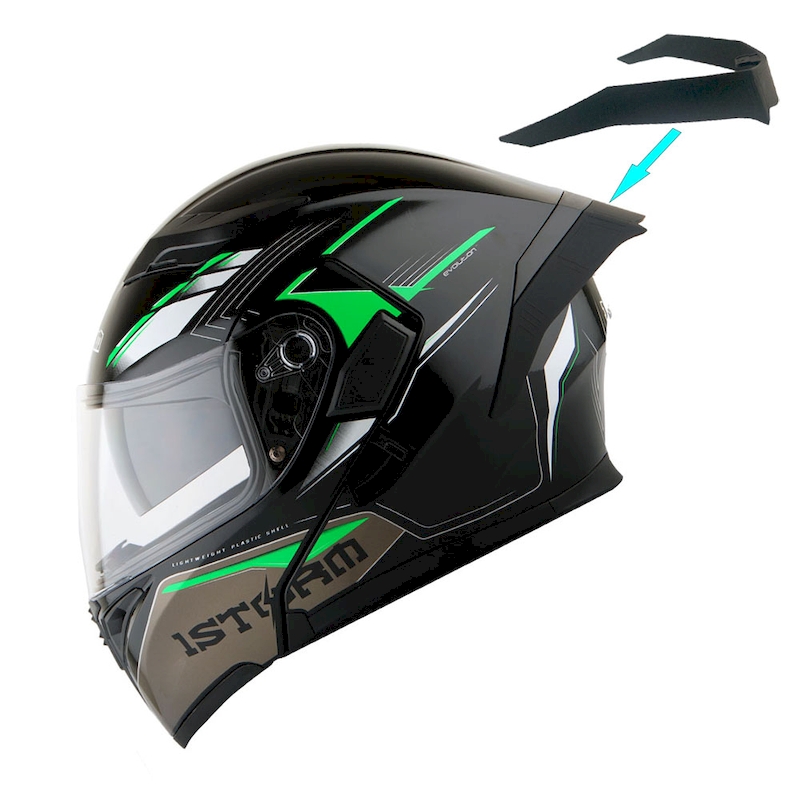
The Importance of Wearing a Helmet
Before exploring the specifics of full-face helmets, it’s essential to understand the fundamental role that helmets play in rider safety.
The Role of Helmets in Safety
Motorcycle riding carries inherent risks. According to numerous studies, wearing a helmet significantly decreases the chance of sustaining severe head injuries in the event of an accident.
- Impact Protection: Helmets are designed to absorb impact energy, decreasing the force transferred to the skull and brain during an accident.
- Injury Reduction: Research indicates that wearing a helmet can reduce the risk of head injury by as much as 69%. This reduction translates to both the likelihood of an accident’s occurrence and the severity of injuries suffered.
Legal Requirements
Many regions and countries enforce helmet laws. Full-face helmets often meet or exceed safety standards set by regulatory authorities.
- Compliance: Riders should check local laws regarding mandatory helmet use. In some places, the law may specify helmet type or safety ratings, which full-face models typically meet.
Beyond Safety: Comfort and Performance
Helmets don’t only serve safety purposes; they can enhance overall riding experiences.
- Weather Protection: Full-face helmets shield against rain, wind, and cold temperatures, making rides more comfortable.
- Noise Reduction: They provide better sound insulation, reducing wind noise, which allows riders to enjoy their journeys with fewer distractions.
With a solid understanding of the importance and benefits of wearing helmets, we can now examine the various features and advantages of full-face helmets specifically.
Benefits of Full-Face Helmets
Full-face helmets offer a variety of features that contribute to their popularity among riders of all types. Let’s dive into the key benefits that make full-face helmets a preferred choice.
Comprehensive Protection
Arguably, the most significant advantage of full-face helmets is the level of protection they provide.
- All-Around Coverage: Full-face helmets protect the entire head, including the chin and jawline. This comprehensive design safeguards some of the most vulnerable areas from impact injuries.
- Enhanced Structural Integrity: Constructed from tough materials, full-face helmets withstand penetrative forces, minimizing the risk of severe injuries.
Advanced Aerodynamics
The streamlined design of full-face helmets provides several benefits for riders, especially those on faster machines.
- Less Wind Resistance: By fully enclosing the head, these helmets minimize wind drag, allowing for greater speed and improved stability while riding.
- Improved Stability: Full-face helmets reduce the tendency of wind to lift or shift the helmet during high-speed rides, ensuring a steady, secure experience.
Noise Reduction
Full-face helmets excel at creating a quieter riding experience:
- Isolation from External Sounds: The snug fit creates a seal that reduces wind noise and other ambient sounds, allowing riders to focus on the road without distraction.
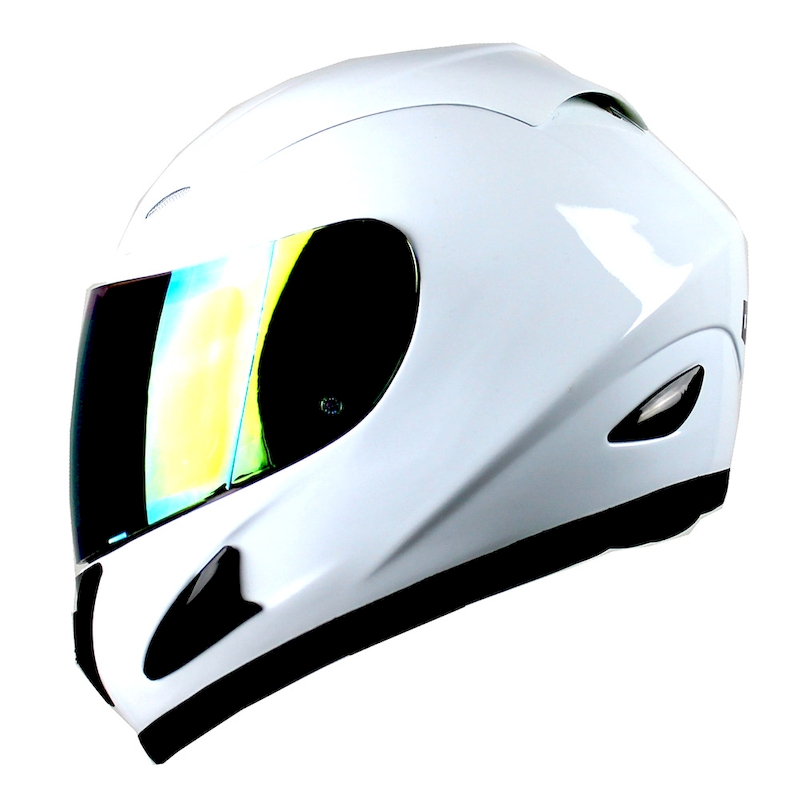
Comfort Features
Modern full-face helmets are designed with rider comfort in mind:
- Ventilation Systems: Most full-face models feature adjustable vents that enhance airflow, helping keep the rider cool in warm weather.
- Padding and Liners: Quality brands often include comfortable inner padding and moisture-wicking liners, improving the overall riding experience.
Safety Features
Many full-face helmets come equipped with additional safety features:
- Face Shields: Many models include integrated visors or shields that protect the rider’s eyes from wind, dust, or debris.
- Retention Systems: Effective strap systems and quick-release mechanisms ensure the helmet remains securely in place during a ride.
With these benefits in mind, full-face helmets stand out as a robust option for safety-conscious riders.
Choosing the Right Full-Face Helmet
Selecting the perfect full-face helmet involves considering various factors that ensure comfort and safety. Each factor plays a vital role in your overall riding experience.
Proper Fit and Sizing
The right fit is crucial when it comes to helmet safety and function.
- Measuring Your Head: Measure your head circumference about an inch above your eyebrows using a soft measuring tape. Refer to individual brands’ sizing charts to find the appropriate size.
- Trying It On: When trying on a helmet, ensure it fits snugly without being overly tight. Pressure points or discomfort can indicate that the helmet is too small.
Helmet Weight
The weight of the helmet can influence comfort levels:
- Lightweight Options: Consider lightweight designs if you plan to ride for extended periods. Heavy helmets can lead to neck strain and discomfort.
Safety Ratings and Certifications
When choosing a full-face helmet, prioritize safety features and certifications.
- DOT, ECE, and SNELL: Look for helmets that meet recognized safety standards. DOT (Department of Transportation) certification is mandatory in the U.S., while ECE (Economic Commission for Europe) and SNELL are additional safety certifications indicating high-performance standards.
Style and Design
While safety is paramount, aesthetics also play a role in your selection process.
- Color and Graphics: Full-face helmets come in various colors and designs, allowing you to express your personal style. While black and white are classic choices, vibrant graphics can enhance visibility.
Aerodynamics and Ventilation
Evaluate the helmet’s design concerning aerodynamics and airflow.
- Ventilation Systems: Select helmets with adjustable vents for optimal airflow. Proper ventilation becomes particularly important during warmer weather or extended rides.
- Aerodynamic Shape: Look for a sleek design that minimizes wind resistance and improves stability, especially for high-speed riding.
Budget Considerations
Full-face helmets are available at various price points and qualities.
- Investing for Safety: Prioritize purchasing a high-quality helmet from reputable manufacturers, even if it requires a higher budget. Quality helmets provide peace of mind and superior protection.
- Balancing Quality and Price: While it is important to consider price, keep in mind that the cheapest option may not guarantee ideal safety or comfort.
Accessories and Extras
Many full-face helmets offer additional accessories that enhance usability.
- Face Shields: Some helmets include interchangeable visors for varying types of weather conditions—polarized or tinted options may also be available.
- Communication Systems: Consider integrating Bluetooth technology for hands-free communication while riding, allowing for music streaming or navigation without disrupting your riding experience.
By considering these factors, you can make an informed decision when selecting the right full-face helmet that suits your specific riding needs.
Maintaining Your Full-Face Helmet
To extend the life of your full-face helmet and keep it functioning optimally, proper maintenance is key. Here are helpful tips on how to care for your helmet:
Regular Cleaning
Keeping your helmet clean is essential for both hygiene and appearance.
- Exterior Shell: Clean the exterior of your helmet using mild detergent mixed with water. Avoid harsh chemicals or solvents that could damage the finish.
- Face Shield Care: Use a soft microfiber cloth to clean the face shield carefully. Avoid using paper towels or rough materials that can scratch the surface.
Interior Cleaning
Cleaning the interior of your helmet can substantially enhance comfort.
- Removable Liners: If your helmet has removable liners, wash them according to manufacturer instructions—most can be machine-washed or gently hand-washed.
- Vent Cleaning: Frequently inspect and clean the vents to ensure optimal airflow. Dust and debris can accumulate, hindering ventilation.
Inspecting for Damage
Regularly inspect your helmet for any signs of damage or wear.
- Check for Cracks: Look for cracks or dents in the shell. If you notice any, consider replacing the helmet immediately.
- Component Testing: Ensure that fastening and retention systems are functioning correctly. If the helmet is loose or the buckle is damaged, it may not provide adequate protection.
Proper Storage
Storing your helmet correctly is critical for maintaining integrity.
- Helmet Bag: Store your full-face helmet inside a dedicated helmet bag to protect it from dust and scratches when not in use.
- Away from Extreme Temperatures: Avoid leaving your helmet in a hot car or exposed to direct sunlight for extended periods, as this can degrade materials over time.
Replacement Timeline
Knowing when to replace your helmet is crucial for ongoing safety.
- Lifespan Awareness: Most helmets have a usable lifespan of around 3 to 5 years, depending on usage and care. If you’ve been in an accident or the helmet shows significant wear, it’s time to replace it.
By adhering to these maintenance practices, you can ensure that your full-face helmet provides reliable protection for years to come.
Popular Full-Face Helmet Brands
Several reputable brands are renowned for producing high-quality full-face helmets that cater to various styles and needs.
Shoei
A staple in the motorcycle helmet market, Shoei helmets are known for their premium quality and advanced safety features.
- Innovative Designs: Shoei helmets often feature aerodynamic designs and cutting-edge ventilation systems.
- Comfort-Focused: Their interior padding and fit systems contribute significantly to comfort while riding.
Arai
Arai is another trusted name in motorcycle safety, known for its commitment to craftsmanship and durability.
- Custom Fit: Arai helmets often include custom-fitting options, ensuring a snug fit.
- Safety First Approach: With numerous safety certifications, Arai helmets are designed to mitigate impact effectively.
Bell
Bell has established itself as a historic brand in the world of motorsports, offering high-quality full-face helmets for various riders.
- Modern Innovations: Incorporating modern technology, many Bell helmets feature integrated communication systems for convenience.
- Stylish Graphics: Known for bold designs and graphics, Bell helmets appeal to style-conscious riders.
HJC
HJC is known for producing affordable yet high-quality helmets, making them accessible to a broader audience.
- Value for Money: HJC helmets provide impressive safety ratings while offering sleek designs at reasonable prices.
- Wide Range: They offer a vast selection of full-face helmets for different riding styles, including touring and sports.
AGV
AGV is regarded for creating full-face helmets that cater to performance and racing.
- Track-Ready Designs: AGV helmets are often designed for high-speed scenarios, providing enhanced aerodynamics and stability.
- Safety Engineering: Their helmets undergo rigorous safety testing, ensuring optimal protection for competitive enthusiasts.
By selecting a reputable brand, riders can ensure they invest in a full-face helmet that combines safety, comfort, and style.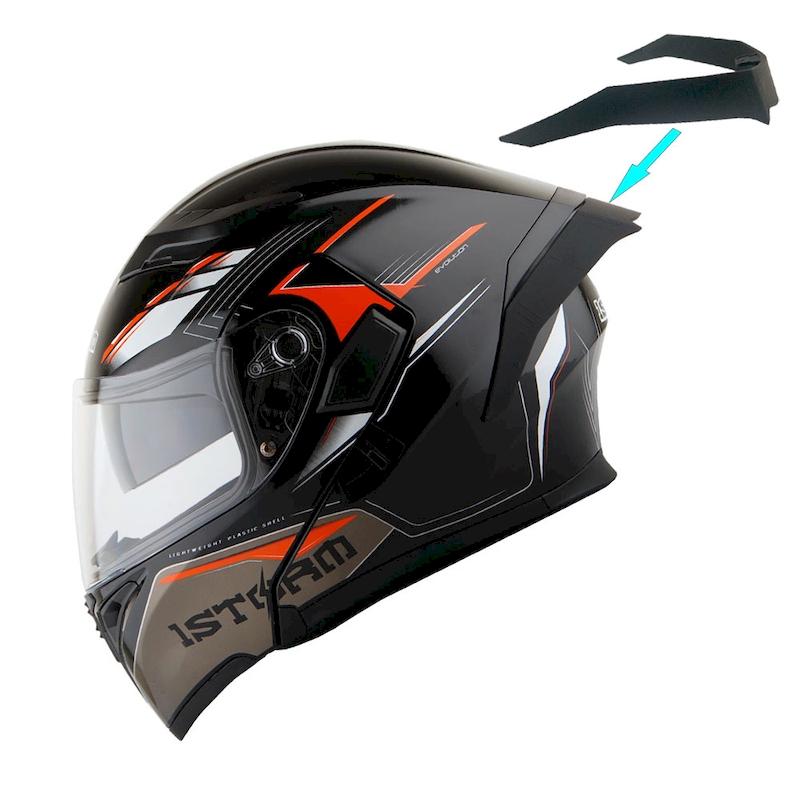
Conclusion
As we have explored throughout this comprehensive guide, the black polo shirt is more than just a wardrobe staple; it represents a blend of style, comfort, and functionality for riders. Understanding the importance of wearing full-face helmets, recognizing their advantages, knowing how to choose the right one, and maintaining the helmet properly are critical elements that every rider should prioritize.
Full-face helmets provide unmatched protection, making them ideal for various riding conditions. With proper care and informed purchasing choices, you can maximize the lifespan and performance of your helmet.
As you embrace motorcycling as a passion, always prioritize safety by investing in high-quality full-face helmets that suit your riding style. Whether commuting daily or enjoying leisurely weekend rides, a well-chosen helmet can enhance your experience and give you peace of mind.
Ultimately, the right full-face helmet protects you while allowing you to enjoy the freedom and exhilaration that comes with the open road. With the knowledge gained from this guide, you can confidently navigate the vast world of motorcycle gear and make informed decisions, ensuring a safe and stylish ride.
